I have a Swing form with a custom table inside a JScrollPane (it's just a JPanel, not a JTable subclass), and I am trying to get it to print. If I just send the whole frame to the printer, the scroll pane cuts off, and if I resize the frame to the size of the contents of the scroll pane, some sort of internal barrier stops the JFrame becoming more than about 1100 pixels tall.
Another alternative would be to create the content pane of the dialog without attaching it to the root JFrame, because the JPanel's size is not limited in that case. But to get the components to lay themselves out and resize to their proper sizes, I seem to need to make the panel displayable, which means at the very least adding it to a JFrame and calling JFrame.pack(), but again, the 1100 pixel limit comes back.
Here's my code for printing the component:
public static void print(final Component comp) {
final float SCALE = .5f;
PrinterJob job = PrinterJob.getPrinterJob();
job.setPrintable(new Printable() {
public int print(Graphics g, PageFormat pf, int page)
throws PrinterException
{
if (page * pf.getImageableHeight() >= SCALE * comp.getHeight())
return NO_SUCH_PAGE;
((Graphics2D)g).translate(pf.getImageableX(), pf.getImageableY()
- page * pf.getImageableHeight());
((Graphics2D)g).scale(SCALE, SCALE);
comp.printAll(g);
return PAGE_EXISTS;
}
});
if (job.printDialog())
try { job.print(); }
catch (PrinterException ex) {}
}
If I do this, the component has zero size:
JPanel c = createPanel(); // This JPanel has a JScrollPane in it with its
// preferredSize equal to that of its viewport component
// (which is not what I do to show the dialog normally)
print(c);
If I do this, the component has the right size, but prints as solid gray because the sub-components have not been laid out:
JPanel c = createPanel();
c.setSize(c.getPeferredSize());
print(c);
These don't seem to make a difference:
JPanel c = createPanel();
c.validate();
c.revalidate();
c.repaint();
print(c);
This makes the panel larger, but it stops at about a page and a half large (1100px):
JPanel c = createPanel();
JFrame f = new JFrame();
f.setContentPane(c);
f.pack();
print(c);
I'm running out of permutations here. Does anyone know either (a) how to change the OS maximum frame size, (b) how to layout and paint an off-screen component, or (c) how to print a Swing component directly, without having to paint it (?). Help is appreciated.
